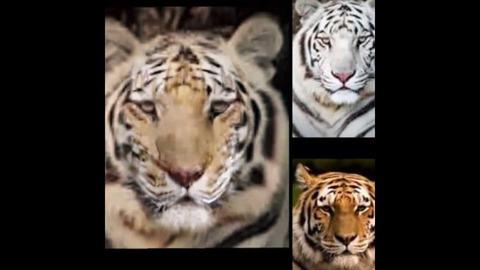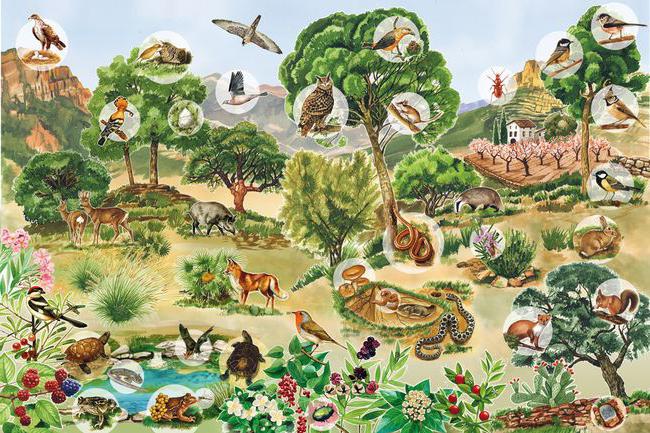Variability in biology is the emergenceindividual differences between individuals of the same species. Due to the variability, the population becomes heterogeneous, and the species appears more likely to adapt to changing environmental conditions.
In such a science as biology, heredity and variability go hand in hand. There are two types of variability:
- Non-hereditary (modification, phenotypic).
- Hereditary (mutational, genotypic).
Non-hereditary variability
Modification variability in biology isthe ability of a single living organism (phenotype) to adapt to environmental factors within its genotype. Due to this property, individuals adapt to climate changes and other conditions of existence. Phenotypic variability underlies the adaptive processes taking place in any organism. Thus, in non-native animals, when the conditions of maintenance improve, productivity increases: milk yield, egg production and so on. And animals brought to mountain areas grow short and with a well-developed undercoat. Change in environmental factors and cause variability. Examples of this process can be easily found in everyday life: the human skin under the influence of ultraviolet rays becomes dark, as a result of physical exertion, muscles develop, plants grown in shaded places and in the light have different leaf shapes, and hares change the color of wool in winter and summer.

Non-hereditary variability is characterized by the following properties:
- the group nature of the changes;
- not inherited by posterity;
- change of the sign within the genotype;
- ratio of the degree of change with the intensity of the external factor.
Hereditary variability
Hereditary or genotypic variability inBiology is the process by which the genome of the organism changes. Thanks to her, the individual acquires signs that were previously uncharacteristic of its appearance. According to Darwin, genotypic variability is the main engine of evolution. Distinguish the following types of hereditary variability:
- mutational;
- combinative.
Combinative variability arises as a result ofexchange of genes during sexual reproduction. In this case, the signs of parents are differently combined in a number of generations, increasing the diversity of organisms in the population. Combinative variability is subject to Mendel's inheritance rules.


Mutations, in turn, are divided into:
- genomic;
- chromosomal;
- genes;
- cytoplasmic.
Changes affecting sex cellsinherited. Mutations in somatic cells can be transmitted to offspring if the individual reproduces in a vegetative way (plants, fungi). Mutations can be beneficial, neutral or harmful.
Genomic mutations
Variability in biology through genomic mutations can be of two types:
- Polyploidy - a mutation often occurs inplants. It is caused by a multiple increase in the total number of chromosomes in the nucleus, which is formed in the process of breaking their divergence to the poles of the cell during division. Polyploid hybrids are widely used in agriculture - more than 500 polyploids are found in crop production (onions, buckwheat, sugar beets, radishes, mint, grapes, and others).
- Aneuploidy - increase or decrease in numberchromosomes on individual pairs. This type of mutation is characterized by a low viability of the individual. A widespread mutation in a person - one extra chromosome on the 21st pair causes Down syndrome.
Chromosomal mutations
Variability in biology by chromosomal mutationsappears when the structure of the chromosomes themselves changes: loss of the terminal region, repetition of a set of genes, rotation of a separate fragment, transfer of a chromosome segment to another location or to another chromosome. Such mutations often occur under the influence of radiation and chemical pollution of the environment.

Gene mutations
Much of these mutations do not manifestexternally, since it is a recessive trait. Gene mutations are caused by a change in the sequence of nucleotides - individual genes - and lead to the appearance of protein molecules with new properties.

Cytoplasmic mutations
Cytoplasmic mutations are associated with changes.in cell cytoplasm structures containing DNA molecules. These are mitochondria and plastids. Such mutations are transmitted through the maternal line, since the zygote receives the entire cytoplasm from the mother egg. An example of a cytoplasmic mutation that caused variability in biology is the peristisolism of plants, which is caused by changes in chloroplasts.
All mutations have the following properties:
- They appear suddenly.
- Are inherited.
- They do not have any orientation. Mutation can also be a minor area, and a vital sign.
- Occur in individual individuals, that is, individual.
- By their manifestation, mutations can be recessive or dominant.
- The same mutation can be repeated.
Each mutation is caused by certain causes.In most cases, it is not possible to establish it precisely. Under experimental conditions, in order to obtain mutations, a directional environmental factor is used — radiation exposure and the like.








